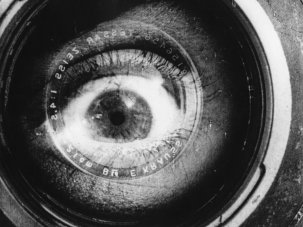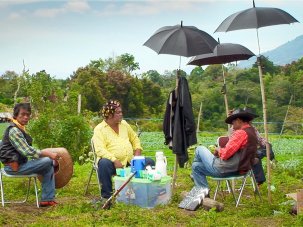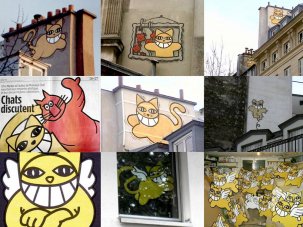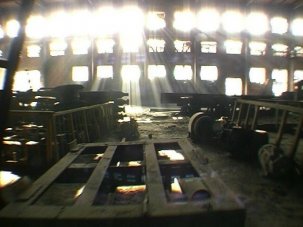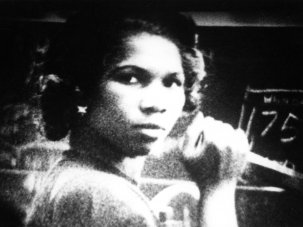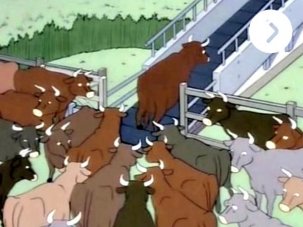Introduction
The new Sight & Sound Documentary Poll is the result of a ‘why didn’t we think of that before’ moment. In the light of the amazing recent success and cultural impact of several nonfiction films, a group of curators, myself included, were chewing over what the BFI might do specifically for documentary films and television. It soon became obvious that we were not sure exactly what it was that we were trying to discuss.

I’m usually loath to do anything that takes lustre away from Sight & Sound’s ten-year poll of the Greatest Films of All Time but a new poll seemed to me the most obvious solution to getting a full view of the documentary canon. Approximately four months later I’m delighted with the quality of what more than 200 critics and curators – including many documentary specialists – and 100 filmmakers (the likes of John Akomfrah, Michael Apted, Clio Barnard, James Benning, Sophie Fiennes, Amos Gitai, Paul Greengrass, Jose Guerin, Isaac Julien, Asif Kapadia, Sergei Loznitsa, Kevin Macdonald, James Marsh, Joshua Oppenheimer, Anand Patwardhan, Pawel Pawlikowski, Nicolas Philibert, Walter Salles and James Toback) have come up with in terms of choices and commentary and I’m very proud of the team of advisors, BFI colleagues and S&S editors who have worked so hard to produce this poll edition.
What’s remarkable about the Top 50 documentaries list is that it feels so fresh. One in five of the films chosen were made since the millennium, and to have a silent film from 1929 at the top of the list is an absolute joy. That allusive essay films feature so strongly throughout demonstrates that nonfiction cinema is not a narrow discipline but a wide open country full of explorers. The current special documentary edition of S&S contains further features and reflections on our poll; the real explorers among you will also want to browse all the individual votes and comments over on our dedicated interactive web page.
The top 50
1. Man with a Movie Camera
Dziga Vertov, USSR 1929 (soundtrack here by Michael Nyman)
David Abelevich Kaufman is documentary’s Jumpin’ Jack Flash. Indeed, there is a photograph of him caught in mid-air, jumping. His pseudonym ‘Dziga Vertov’, which translates as ‘spinning top’, could not be more apposite. And his masterpiece, Man with a Movie Camera (Chelovek s kinoapparatom, 1929) is a flash spinning-top of a movie. It has taken more than 80 years, though, for this to be fully recognised.
Man with a Movie Camera is a ‘city symphony’ film of a kind not uncommon in the 1920s. These films celebrated the vibrancy of the modern cityscape with pastiches of urban images, for the most part neither set up nor reconstructed. Vertov, though, plays fast and loose with the conventions of such films, to profound effect. He superimposes, splits the screen, deploys fast- and slow-motion and extreme close-ups, and animates using stop-motion. Most surprisingly, he shows us the processes whereby a documentary is made. The eponymous man with the movie camera is his brother Mikhail, and his wife, Yelizaveta Svilova, is his editor. Both appear at work on screen.
His experimental exuberance was not appreciated. When the film was seen in the West, it was dismissed. The British documentarist Paul Rotha remembered:
“Vertov we regarded really as rather a joke, you know. All this cutting, and one camera photographing another camera photographing another camera – it was all trickery, and we didn’t take it seriously.”
At the time, his colleague John Grierson, the Scottish producer and theorist regarded as the father of British realist documentary, dismissed Vertov’s work peremptorily:
“Vertov has pushed the argument to a point at which it becomes ridiculous.”
More profoundly and more dangerously for Vertov, he was also attacked in the Soviet Union. Eisenstein called Man with a Movie Camera “cine-hooliganism”.
The comrade-theoreticians associated with the intellectual LEF journal were equally unimpressed:
“Dziga Vertov cuts up newsreel. In this sense his work is not artistically progressive” – a failing that could get you years in the Gulag.
Vertov, who always marched to a different drummer, compounded the threat. He never produced recognisable scripts, shot from the hip (most of the time), went over budget and was generally uncontrollable. He was a combative polemicist vehemently insisting that the potential of the cinema as a revolutionary tool was being ignored by his fellows. Their fictions were bourgeois distractions, unlike his efforts with the “unplayed film”, as he called documentary.
Almost from the start of his career in newsreels immediately after the Bolshevik revolution of 1917, and in total contrast to the fixed-camera procedures of the time, he was already experimenting with special effects to reveal, through the kino-glaz, the camera’s eye, film truth – kino-pravda. “Film is not merely… facts recorded on film… but the product, a ‘higher mathematics’ of facts.” Crucially, he disdained everyday observationalism: “Our eyes,” he wrote, “see very poorly and very little… the movie camera was invented to penetrate more deeply into the visible world”…
Today, all such possibilities matter more and more. A ‘kino-eye’ seeing beneath surface realities offers a crucial lifeline as modern technology undercuts and wounds mainstream realist documentary’s essential observationalist assumptions, perhaps fatally. Vertov’s agenda in Man with a Movie Camera signposts nothing less than how documentary can survive the digital destruction of photographic image integrity and yet still, as Vertov wanted, “show us life”. Vertov is, in fact, the key to documentary’s future. It is no wonder that two years ago Man with a Movie Camera entered the top ten in Sight & Sound’s ‘Greatest films of all time’ list and that now it tops the poll for the greatest documentary ever made. It is not merely that a great film now receives its just deserts. Vertov has no reason any longer to be “sad”.
—Brian Winston, excerpted from a new essay in our September 2014 issue
2. Shoah
Claude Lanzmann, France 1985
There are documentary filmmakers who plant their stakes within existing traditions and those for whom cinema has to be reinvented. Claude Lanzmann clearly belongs in the latter category.
Of course cinema already had to exist in order to allow Lanzmann to make Shoah – the title is the Hebrew word for catastrophe – but he also had to rethink what cinema could be. His 550-minute examination of the Jewish Holocaust falls within the documentary tradition of investigative journalism, but what he does with that form is so confrontational and relentless that it demands to be described in philosophical/spiritual terms rather than simply cinematically. Determined to make us imagine the unimaginable, Lanzmann literalises a quote from the philosopher Emil Fackenheim:
“The European Jews massacred are not just of the past, they are the presence of an absence.”
One could even describe Shoah as a kind of cruel but determined shotgun marriage between Judaism and existentialism – a match between Lanzmann’s sense of his tribal roots (he was born in 1925 to a French Jewish family of Eastern European immigrants, and joined the Resistance at the age of 18) and his adopted intellectual roots (in his 20s he became editor of Jean-Paul Sartre’s journal Les Temps modernes and the lover of Simone de Beauvoir).
How does one negotiate between a religion founded on the dictates of the past and a philosophy founded on the needs and challenges of the present? First of all, in the case of Shoah, by refusing any historical or archival footage or narration. The film depends exclusively on interviews and footage shot in the present, either at certain key places where the Holocaust occurred (on the trains carrying Jews to the death camps, or at what remains of the camps themselves at Chelmno, Sobibor, Treblinka, Auschwitz) or in other relevant locations in Wlodawa, Kolo, Berlin, Belzec, Warsaw – even, most memorably, in an Israeli barbershop.
Secondly, by recording Lanzmann and others in their own languages (including German, Hebrew, Polish and Yiddish) and including the translations into French, which are then subtitled in English in Anglo-American prints of the film. And thirdly, as de Beauvoir noted in her preface to the film’s published text, by editing the sequences not according to any chronological order, but poetically. “To write poetry after Auschwitz is barbaric,” Theodor Adorno once wrote, and Lanzmann’s singular achievement is to both challenge and corroborate that statement.
—Jonathan Rosenbaum
3. Sans soleil
Chris Marker, France 1982
“By the way, did you know that there are emus in the Ile de France?” This is surely not the most pertinent question in Chris Marker’s monumental Sans soleil – a time-and-space-hopping travelogue that may be one of the most ardently searching movies ever made – but it perfectly encapsulates the film’s M.O.: the sly, conspiratorial tone that collapses the literal and figurative distance between the images on the screen and the epigrams on the soundtrack, and the viewer doing his or her level best to keep up with the racing pace of both. Allusions to Jean-Jacques Rousseau, the Khmer Rouge and the revolutionary history of Guinea-Bissau are heady stuff, but who can resist a glancing close-up of a puffed-up bird bobbing its way through a botanical garden?
Rigour and discursiveness – or perhaps a uniquely discursive rigour – are the most potent weapons in Sans soleil’s arsenal. Shot by Marker under the pseudonym Sandor Krasna and narrated (in both its English and French-language versions) by an actress pretending to be this cipher’s closest correspondent – and thus a vessel for conveying both his footage and his thoughts to the audience – the film is unique in the documentary canon for its simultaneous embodiment of both documentary’s most classical and radical qualities.
At its core, the work is an exercise in ethnographic filmmaking, with Marker-as-Krasna decamping to locations in Japan and Africa to observe the environments and rituals therein. But the highly mediated presentation – the adoption of a fictional framework and the relentless manipulation and juxtaposition of the images into a kind of audiovisual labyrinth – gets so far away from Flaherty that it actually laps him: depending on one’s perspective, Sans soleil is either an hommage to the observational ethos of Nanook of the North or an ardent repudiation.
It’s a cliché to say that about a movie – that its true shape or texture is in the eye of the beholder – but it’s true of Sans soleil, which not only withstands multiple viewings, but never seems to be the same film twice. It addresses memory even as its different threads seem to forget themselves; it parses geopolitics without betraying any affiliation; it might be Marker’s most elaborately self-effacing film, or his most plangently personal. It’s quite telling that the emu that shows up seemingly apropos of nothing near the start returns at the end, and that even though he’s barely recognisable through the video-artefacted veil of Japanese artist Hayao Yamaneko’s electronic imagery – a visual space that the narration refers to as “the zone” – he feels like some long-lost old friend. An emu in the Ile de France is a rare bird, and so is Sans soleil.
—Adam Nayman
4. Night and Fog
Alain Resnais, France 1955
In 1945 moviegoers worldwide became familiar through weekly newsreels in their local cinemas with the unspeakable conditions in the recently liberated Nazi extermination camps. Immediately there followed documentary assemblages of this material (most notably for screening as evidence at the Nuremberg war crime trials). Not, however, until Night and Fog (Nuit et brouillard), commissioned to mark the tenth anniversary of the Allied liberation of the most notorious camp, at Auschwitz, did film producers truly confront and define the moral and aesthetic parameters involved in treating such an intractable subject.
Everyone involved in making the film was a modernist, associated with the international avant garde (most famously at the time the composer Hanns Eisler, an Austrian former pupil of Schoenberg who had spent the Nazi era in exile). But the director, Alain Resnais, refused to take part until it was settled that the script should be written by the poet and editor Jean Cayrol, himself a survivor of the camps. They chose to act with the utmost restraint, questioning the nature of film itself and finding a direct, transparent, understated style for the images, the commentary and the unassertive music.
Resnais considered the film more a meditation than a documentary, and the movie unfolds chronologically. It begins in 1933 with the coming of the Third Reich, continues through the covert building of the camps, the transportation of the prisoners, the creation of the hellish death culture of gas chambers and crematoria, and concludes with the liberation in 1945 and the question of how the memory of the horrors should be preserved and mediated. The past is archive footage in grainy black and white, filmed by SS guards and Allied liberators. The ruined buildings, rusty barbed-wire fences and verdant surroundings of Auschwitz in 1955 are rendered in almost seductive colour. We are compelled to participate in making sense of an experience reduced here to its ineffable, existential essence.
Night and Fog (a translation of ‘Nacht und Nebel’, the obfuscatory Nazi term for the political smokescreen under which the system operated) ran into trouble in 1955 with both German authorities and the collaborationist French police, while the Israelis thought insufficient attention was paid to Jews as Holocaust victims. Five years passed before its British release, with an X Certificate. But it was soon established and remains as a touchstone, the greatest, most crystalline film on the subject, the one every filmmaker must come to terms with before amplifying on this most challenging of topics.
—Philip French
5. The Thin Blue Line
Errol Morris, USA 1989
A good prosecutor can put a guilty suspect behind bars, we hear in The Thin Blue Line, but it takes a great one to convict an innocent man. Something similar might be said of Errol Morris’s brilliantly unstable, highly influential investigation into the 1976 roadside shooting of a Texas cop and the wrongful conviction of one Randall Adams. Demonstrating a miscarriage of justice is impressive, but it’s quite another thing to undermine the very notion of a stable truth.
The array of interviews with key players makes it clear a raw deal went down. Yet the filmmaker also includes the contradictions, the backtracking, the oddball asides. Most perversely, he creates a confounding palimpsest of deadpan re-enactments that flirt with the absurd (and find their echo in the iterative Philip Glass score). Intense close-ups – of sirens, of hurled milkshakes – evoke mystery, or myopia, in the search for meaning.
The Academy Awards documentary committee infamously failed to nominate the film, reportedly ending their preview before the climactic acknowledgment of guilt. But The Thin Blue Line would not be the last of Morris’s many voyages into the unknown (and the unknown known).
—Nicolas Rapold
6. Chronicle of a Summer
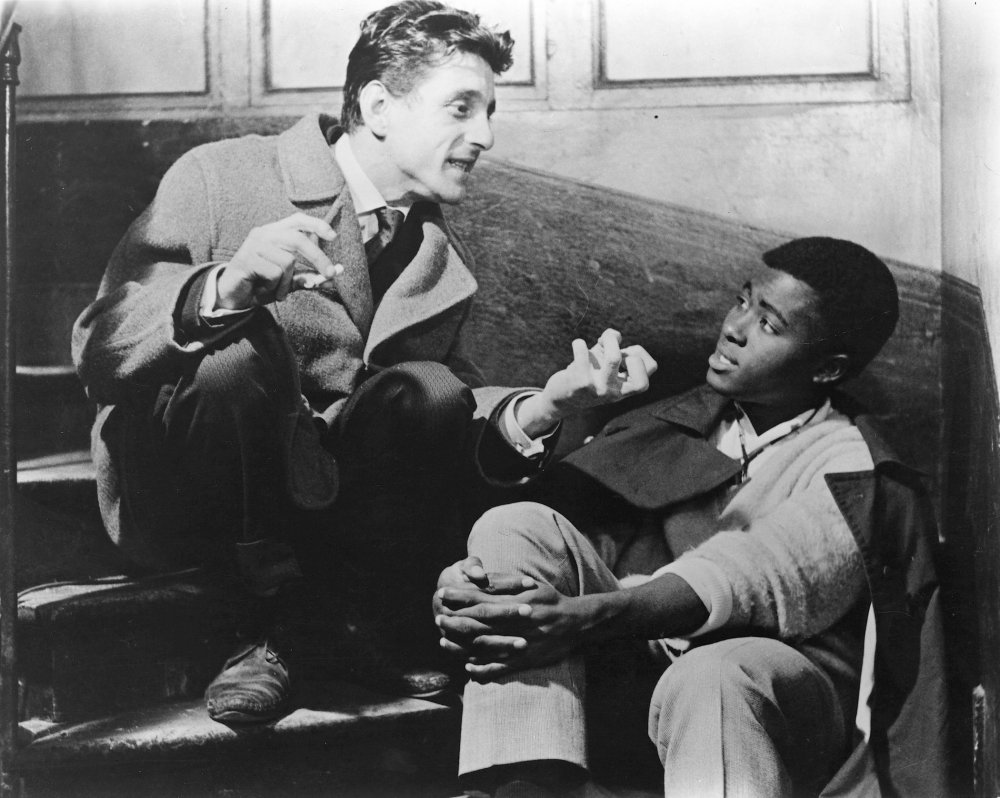
Chronicle of a Summer (1961)
Jean Rouch & Edgar Morin, France 1961
Chronicle of a Summer still feels like a letter from a better future for documentary filmmaking. As if to forecast, and pre-empt, the decades-long war to define the precepts of ethnographic nonfiction, it procedurally does away with dead-end questions of verity, construct and reality, and demonstrates plainly ways to approach equanimity with ‘subjects’. Jean Rouch and Edgar Morin are the architects of a social collaboration and are rigorously open-handed with the materials they’re using. Their loose vox-pop style, beginning each encounter by asking whether the interviewee is happy, disarmingly mixes with scenes that show how cinema, in any regard, must be artificial – employing classic shot-reverse-shot techniques in otherwise uneventful conversational moments.
At the same time, Rouch and Morin remind us of a past when almost no one was camera-ready, when the idea of being part of the media, let alone engineering it, was foreign, and when the question of truth in performance was nascent. It doesn’t find innocence, exactly – the conversations are often extremely loaded – but rather a candour, an openness, that cannot be replaced now that we all continually see ourselves represented on all manner of screens, and can’t help but act with these images in mind. And no, of course we’re not happy.
—Rachael Rakes
7. Nanook of the North
Robert Flaherty, USA 1922 (soundtrack here by Timothy Brock)
When Nanook, the hunter-hero of Robert Flaherty’s 1922 Inuit documentary, is filmed straining to land a seal with a line dropped through a hole in the ice, his tumbles call to mind the era’s beloved slapstick comedy. And well it might – there’s no seal on the end of Nanook’s line, just a group of friends giving it a few well-timed tugs. And Nanook is not Nanook, but a man named Allakariallak. The wife who chews his boots? Not his, though she may have shared Flaherty’s bed. More to the point, in 1922, Inuit of the Canadian Arctic hunted with guns, not spears – so the lo-tech kill scenes shot by Flaherty for the movie exposed everyone involved to considerable, and needless, danger.
Nanook of the North is notorious for its fakery, its open-faced igloo and cutesy depiction of the Inuit as untouched by Western culture. But the traits that made it a hit in 1922 have given this documentary a timeless appeal. Flaherty’s photography is beautiful, and his make-believe methods captured the traditional skills of Allakariallak’s ancestors on film before they died out altogether; to the cinema audiences of the time, Nanook was a journey to a foreign and fascinating place. This documentary may not play by today’s rules, but it continues to function as a living museum, animating a world that was almost gone then – entirely lost now.
—Pamela Hutchinson
8. The Gleaners and I
Agnès Varda, France 2000
“This is my project: to film with one hand my other hand.” Delivered in voiceover by the filmmaker, this is the essence of Les Glaneurs et la Glaneuse, Agnès Varda’s handheld DV autoportrait of the artist as an older woman. But what seems small and simple, albeit rigorous in its intimacy, brilliantly encompasses agriculture, art history, class politics, ecology, economics, recycling raps and (via an interview with a descendant of Louis Daguerre) the origins of cinema.
In passionately identifying herself with misshapen potatoes, Varda recuperates a useful beauty, inventing an austerity cinema that – in its rich digressions and layers of references – is itself never austere. She follows foragers and freegans who could have stepped out of Millet’s painting The Gleaners, a trompe l’oeil effect with which the film plays, as Varda herself becomes a gleaner, yoking oil painting and observations of those living on the social margins.
The hand that ‘catches’ lorries (in a witty trick of scale) also catches us; heart-shaped potatoes touch our hearts. Caught in the hand that Varda films are traces of age and effort, of earth and art. This small embodied observation connects us to cinematic and cosmic mysteries of time, work and grace.
—Sophie Mayer
=9. Dont Look Back
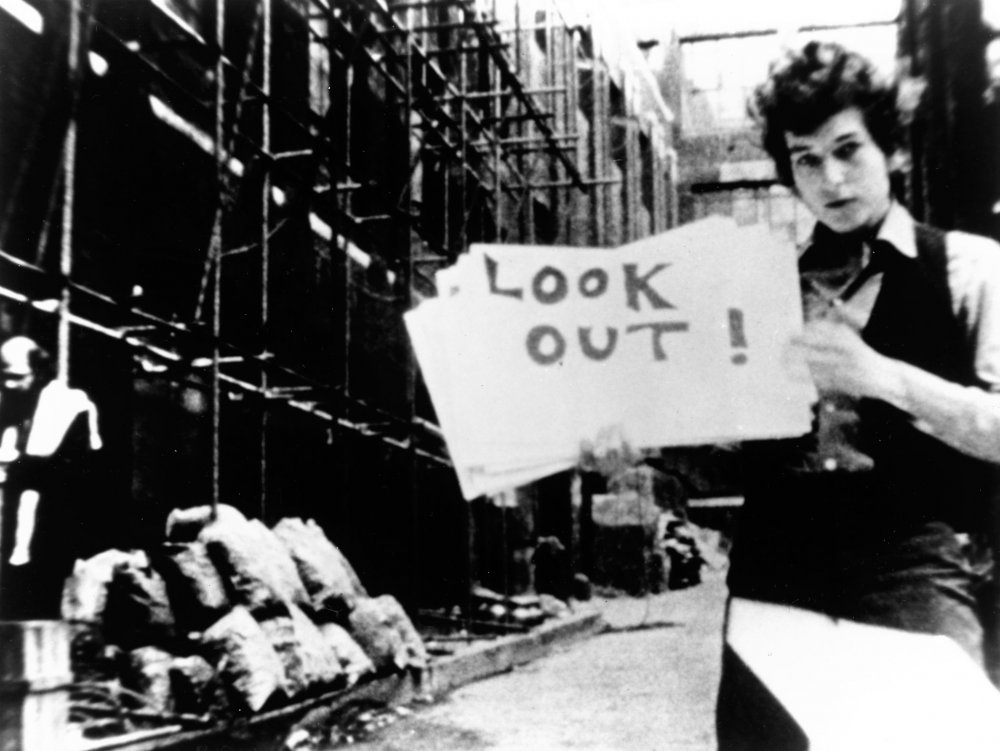
Dont Look Back (1967)
D.A. Pennebaker, USA 1967
Bob Dylan has been many things to many people over his lifetime, not least to himself. The man born Robert Zimmerman knows well the value of obscuring myths and shifting personas, and part of the fascination of D.A. Pennebaker’s pioneering Direct Cinema account of Dylan’s 1965 tour of Britain is the way it captures the singer transforming on camera into ‘Dylan’, the unreachably cool, detached yet wired, lightning-in-a-bottle young genius who, as Greil Marcus memorably wrote, “seemed less to occupy a turning point in cultural space and time than to be that turning point.”
The persona is partly an armour to deal with the stresses of fame, and to pop the fawning earnestness of everyone he meets, but it’s also a knowing cinematic construct, one we suspect Pennebaker understood and encouraged. Not that the film is any more flattering or comfortable than, say, Grey Gardens; this ‘Dylan’ can be confrontational and even mercilessly cruel, as when he immediately spikes Donovan’s earnest recital of ‘A Song for You’ by unveiling his own new ‘It’s All Over Now, Baby Blue’. But the film also captures a genius at the height of his inspiration and, in the card-cued alleyway ‘performance’ of ‘Subterranean Homesick Blues’, left us with one of the iconic images of rock history.
—James Bell
=9. Grey Gardens

Grey Gardens (1975)
Albert and David Maysles, Ellen Hovde and Muffie Meyer, USA 1975
It’s a documentary, but you couldn’t make it up. Imagine if John Waters shot a script by Tennessee Williams and it was broadcast in a TV slot usually reserved for The Hoarder Next Door or How Clean Is Your House? The Maysles’ best-loved film (co-directed with Ellen Hovde and Muffie Meyer) is a fly-in-a-Harvey-Wallbanger look at the world of Jackie O.’s eccentric cousins, Big Edie and Little Edie (and their interloper, ‘the Marble Faun’). It’s fingernails-down-blackboard wonderful, as the Edies reminisce, sing, dance, yell at each other and watch approvingly as cats and raccoons befoul their rotting Long Island retreat.
Little Edie, still stunningly beautiful at 56, models a series of extraordinary tied-together outfits and turbans. We never do find out what happened to her hair. Big Edie appears to wear very little around her massive girth. The filmmakers look away when one of her breasts falls out. It’s a cult classic, wildly entertaining and camp as Christmas. It’s been made into a stage musical, and dramatised for HBO. But it’s also a film that allows women to speak in their own crazy voices and, despite the backdrop of high society, it captures universal truths about family ties.
—Jane Giles
11. The Sorrow and the Pity
Marcel Ophüls, Switzerland 1969
=12. Grizzly Man
Werner Herzog, USA 2005
=12. Land without Bread
Luis Buñuel, Spain 1933
=12. Nostalgia for the Light
Patricio Guzmán, Chile/Spain/France/Germany/USA 2010
=15. F for Fake
Orson Welles, France/Iran 1975
=15. The Up Series
Paul Almond (Seven Up!) then Michael Apted, UK 1964-ongoing
=17. Hoop Dreams
Steve James, USA 1994
=17. West of the Tracks
Wang Bing, China 2002
=19. The Act of Killing
Joshua Oppenheimer, Christine Cynn and anonymous, Denmark/Finland/UK/Germany/Netherlands/Norway/Poland/Sweden 2012
=19. The Battle of Chile
Patricio Guzmán, Chile/Cuba 1975-78
=19. The House is Black
(Khaneh siah ast) Forough Farrokhzad, Iran 1963
=19. Listen to Britain
Humphrey Jennings and Stewart McAllister, UK 1942
23. The Emperor’s Naked Army Marches On
Hara Kazuo, Japan 1987
17 votes
=24. Harlan County U.S.A.
Barbara Kopple, USA 1976
16 votes
=24. Histoire(s) du Cinèma
Jean-Luc Godard, France 1998
16 votes
=24. Salesman
Albert and David Maysles and Charlotte Zwerin, USA 1968
16 votes
27. Titicut Follies
Frederick Wiseman, USA 1967
15 votes
=28. Capturing the Friedmans
Andrew Jarecki, USA 2003
14 votes
=28. Gimme Shelter
Albert and David Maysles and Charlotte Zwerin, USA 1970
14 votes
30. Leviathan
Lucien Castaing-Taylor and Véréna Paravel, France/UK/USA 2012
13 votes
=31. Lessons of Darkness
Werner Herzog, Germany 1992
12 votes
=31. The Quince Tree Sun
Victor Erice, Spain 1992
X votes
=33. Night Mail
Harry Watt and Basil Wright, UK 1936
X votes
=33. Primary
Robert Drew, USA 1960
X votes
=35. Crumb
Terry Zwigoff, USA 1994
X votes
=35. A Diary for Timothy
Humphrey Jennings, UK 1946
X votes
=37. Close-up
Abbas Kiarostami, Iran 1989
X votes
=37. The Fog of War
Errol Morris, USA 2003
9 votes
=37. Los Angeles Plays Itself
Thom Andersen, USA 2003
9 votes
=37. Man on Wire
James Marsh, UK 2007
9 votes
=37. Moi, un noir
Jean Rouch, France 1959
9 votes
=37. Portrait of Jason
Shirley Clarke, USA 1967
9 votes
=37. À Propos de Nice
Jean Vigo, France 1930
9 votes
=37. Roger & Me
Michael Moore, USA 1989
9 votes
=37. Le Sang des bêtes
Georges Franju, France 1948
9 votes
=37. The War Game
Peter Watkins, UK 1965
9 votes
=47. Culloden
Peter Watkins, UK 1964
votes
=47. Diaries, Notes and Sketches: Walden
Jonas Mekas, USA 1969
X votes
=47. D’Est
Chantal Akerman, Belgium/France/Portugal 1993
X votes
=47. Handsworth Songs
John Akomfrah, UK 1986
8 votes
=47. The Hour of the Furnaces
Octavio Getino and Fernando Solanas, Argentina 1968
8 votes
=47. Seasons
Artavazd Pelechian, USSR/Armenia 1975
8 votes
=47. Triumph of the Will
Leni Riefenstahl, Germany 1935
8 votes
=47. Waltz with Bashir
Ari Folman, Israel/France/Germany/Japan/USA 2008
8 votes
=47. Welfare
Frederick Wiseman, USA 1975
8 votes
=47. Workers Leaving the Lumière Factory
Louis and Auguste Lumière, France 1895
8 votes
Browse all the votes and comments on our interactive poll webpage
-
The Greatest Documentaries of All Time – all the votes
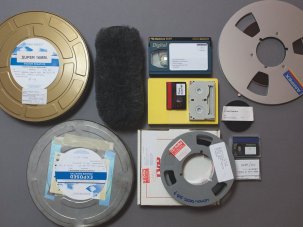
Browse all the votes and comments in our poll of 340 documentary critics, curators, academics and filmmakers.
-
The Greatest Documentaries of All Time poll
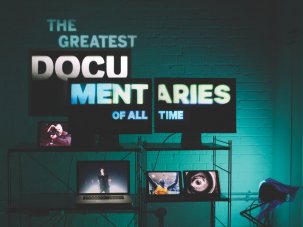
What are the greatest documentaries ever made? We polled 340 critics, programmers and filmmakers in the search for authoritative answers.
-
Sight & Sound: the September 2014 issue
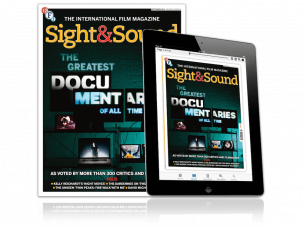
The Greatest Documentaries of All Time poll, plus the documentary new wave, Laura Poitras, the Dardennes, Kelly Reichardt and Raymond Durgnat.
-
Watch the best documentaries on BFI Player
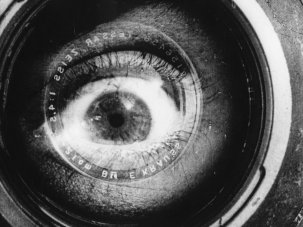
From rediscoved gems to modern classics – see some of the greatest documentaries ever made on BFI Player.
-
The Digital Edition and Archive quick link
Log in here to your digital edition and archive subscription, take a look at the packages on offer and buy a subscription.




